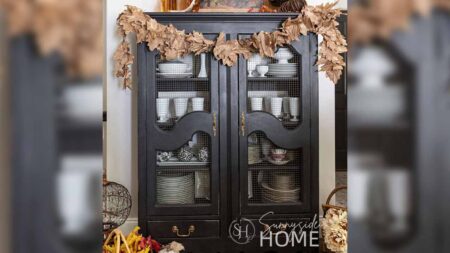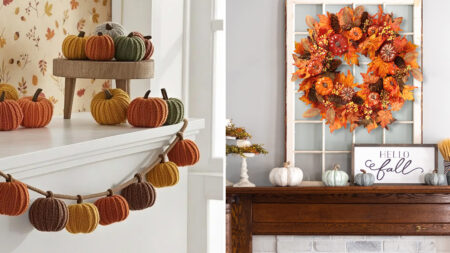Smart textiles are changing the world, finding applications in diverse industries such as fashion and home décor as well. These advanced fabrics are now being used for furniture upholstery and decorations. Interestingly, some textiles can even help regulate the temperature in a room. These temperature-controlling textiles are a game-changer for anyone looking to create a comfortable living environment. They can keep you warm when it’s cold outside and cool you down in the heat with thermoregulation and insulation. Apart from their functional benefits, these fabrics add aesthetic value to home décor while also helping to save energy.
What are Temperature-Regulating Textiles?
So, what exactly are temperature-regulating textiles? In simple words, these materials are specifically designed to manage and control temperature. They do this by absorbing, storing, and releasing heat as needed to maintain a stable temperature. It is like having a built-in thermostat in your fabrics.
These fabrics are primarily made using phase change materials (PCMs) and moisture-wicking fibers, which can absorb excess heat when you are warm and release it when you are cold. This makes them ideal for bedding, upholstery, and even clothing.
The science behind temperature-regulating textiles is fascinating. These materials are engineered at the molecular level to respond to changes in temperature. When the ambient temperature rises, the textiles absorb heat cooling down the surrounding environment. Conversely, when the temperature drops, they release the stored heat providing warmth. This dynamic process is made possible by the unique properties of the fibers and the way they are woven together. The result is a textile that can adapt to your body’s temperature fluctuations, keeping you comfortable no matter the weather outside.
The use of nanotechnology is one of the most promising advancements in temperature-regulating textiles. By manipulating materials at the nano-scale level, scientists can create fibers with enhanced properties such as increased surface area and improved heat transfer capabilities. These nano-fibers can be woven into fabrics that are more effective at regulating temperature and moisture. As research in this field continues to progress, we can expect to see further advancement in temperature-controlling textiles in the future.

Benefits of Temperature-Regulating Textiles in Home Décor
- Enhanced Comfort All Year Round: Imagine sleeping soundly in summer and staying warm in winter without cranking the thermostat.
- Improved Energy Efficiency: These textiles naturally balance indoor temperature, reducing reliance on heating and cooling systems to lower energy bills.
- Better Air Quality: By managing humidity, they can create a healthier environment, especially for those with allergies or respiratory problems.
- Sustainable Choice: Reduced need for artificial temperature control translates to a lower carbon footprint.
- Gentle on Skin: Natural temperature regulation makes them comfortable for people with sensitivities.
- Easy Care: Many temperature-regulating textiles are easy to maintain and perfect for busy households.
Applications in Different Areas of Home
Temperature-regulating textiles can be used in various parts of your home to maximize comfort. In the living room, consider incorporating these fabrics as upholstery for your sofas and chairs, along with thermo-regulating curtains to help keep the room at a comfortable temperature. For the bedroom, temperature-controlled bedding such as sheets and mattresses can make a significant difference in ensuring a good night’s sleep.
Smart textiles can also be used for seat cushions of dining chairs while a thermo-regulating desk pad can make a comfortable working environment in your home office. Even in the bathroom, moisture-wicking towels and bath mats can add an extra layer of comfort by keeping you dry and cozy.
Also Read: 18 Most Popular Interior Design Styles Homeowners Should Know
Designing Living Space With Thermo-Regulating Fabrics
Integrating temperature-regulating textiles into your existing décor is not that complicated. Start by choosing fabrics that complement your current color scheme and style. For example, you could opt for light-colored linens during the summer months and switch to darker, richer earthy tones for winter. Layering different fabrics is another effective way to achieve optimal comfort.
Keep Your Tiny House Comfy Year-Round with Innovative Insulation
Tiny houses have become a major and popular housing solution and smart textiles are making a mark in the sector, too. These compact dwellings come with their own set of challenges when it comes to maintaining a comfortable temperature. Due to the limited space, effective insulation becomes even more crucial. Temperature-regulating materials like foam panels infused with PCMs or specialized wall insulations can ensure consistent temperatures throughout the year in such small spaces. Their enhanced insulation properties are perfectly suited for maintaining comfortable temperatures in tiny houses.
Crafting Perfect Pet Corner Using Temperature-Controlled Materials
Your pets deserve comfort just as much as you do! Temperature-regulating textiles can also be used to create a cozy corner for your furry friends, ensuring they stay comfortable year-round. Opt for pet beds made from thermo-regulating materials that adapt to your pet’s body temperature. Furthermore, blankets and cushions filled with moisture-wicking fibers can also help keep them dry and comfy.
Follow Homecrux on Google News!




